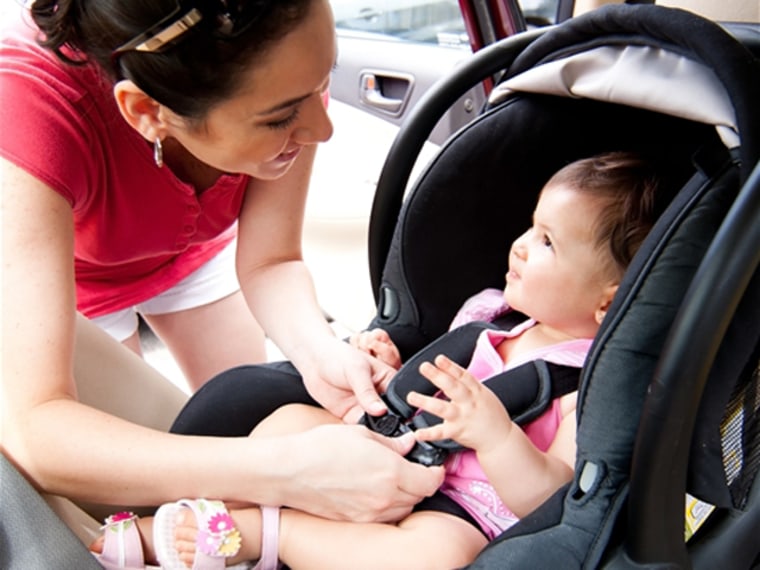By Tanya Mohn
Installing a car seat can cause plenty of parental frustration. And, more often than not -- after cursing those confusing latches and tussling with tethers-- it is done incorrectly.
But finally, a new study says what many of us have suspected all along: Improper installation is not our fault! Blame the car design industry.
Much of the problem stems from the vehicle rear seat design, which works against parents’ best intentions, according to the study, released Thursday by The Insurance Institute for Highway Safety, a nonprofit group financed by the insurance industry.
“This is a long standing problem, and we think it’s time to fix it,” said Anne McCartt, senior vice president for research and one of the report’s authors, noting that installing a car seat is frequently not as simple as people may think
The study found that belt buckles or other seat hardware often got in the way of the connectors for car seats, or the connectors are buried so far in the seat, that they were often difficult to locate.
Kaela Rowe, a child psychologist from Chicago and mother of a four- year old son, said she has found car seats tricky to install, but does whatever it takes to keep her child safe. Brute force helps, she says.
“It is sometimes difficult to get the car seat in tightly, so I have to use my knee to push it in.”
Rowe has also found an approach that helps her family: she uses multiple car seats, which means seats don’t have to be re-installed in different cars.
“It was irritating enough to install my car seat in different cars, that I've asked my friends for extra seats,” Rowe said, “so that we can have one in our car, one in my Mom's car, and one in the babysitter's car.”
Earlier research by the institute found that parents often fail to use the upper tether that is designed to secure the top part of the forward-facing car seat in the event of a crash. Tethers are intended to help prevent child restraints from moving too far forward during crashes, which put children at risk of head or neck injuries
Using a tether “is essential,” said McCartt. Many parents do not understand how important it is, and may not think about using the tether when they move their child from a rear facing restraints to a forward one, she said. The tether is also necessary if the car seat is installed using seatbelts. With belts, it is critical that they be in lock mode, so the belt is not freely moving, experts say.
A federal regulation designed to make correct installation of car restraints easier by standardizing attachment hardware went into effect in 2003. It’s called LATCH, which stands for Lower Anchors and Tethers for Children, and all cars have it now.
But nearly a decade since the LATCH system was put in place, in most cases, the car installation process is not easier, the report found. And while automakers are abiding to the new regulation by installing the hardware required, overall their rear seat designs do not allow for easier installation.
During the research, conducted in conjunction with the University of Michigan Transportation Research Institute, LATCH hardware and rear seat designs were scrutinized in a range of passenger vehicles that were marketed to families. But only 21 of the 98 top-selling 2010-11 model vehicles evaluated were found to have LATCH designs that are easy to use.
But some road safety experts are hopeful improvements will be forthcoming.
“Parents clearly want to do what is best for their kids but are often frustrated by the difficulty of installing car seats,” said Bella Dinh-Zarr, the North American director of Make Roads Safe, a global campaign, and director of road safety for the FIA Foundation for the Automobile and Society, a nonprofit group based in London.
“With more cooperation among auto makers and car seat manufacturers, and more education of parents, we can and should make it easier for parents to drive their kids around safely,” Dinh-Zarr said.
For more information about the study, and a list of car models that meet easy installation criteria, go to www.iihs.org.
Tanya Mohn, a regular contributor to msnbc.com, writes frequently about road safety and travel
More stories from TODAY Moms:
Why do we let politicians hold our babies?
